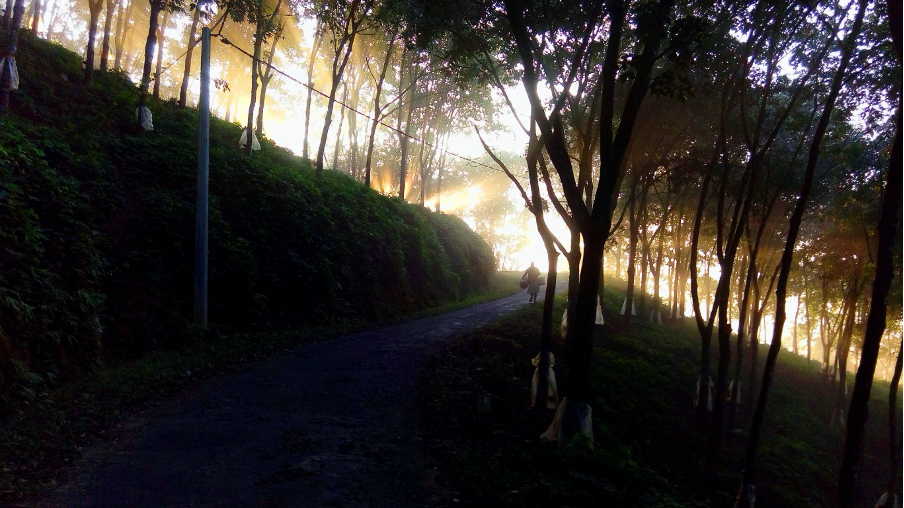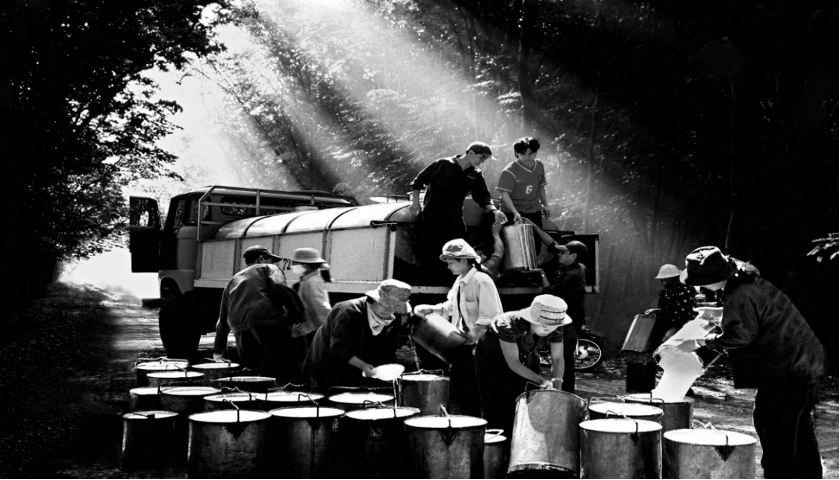By Salvatore Pinizzotto (IRSG), Lekshmi Nair (IRSG), Vincent Gitz (CIFOR/FTA), Alexandre Meybeck (CIFOR/FTA), Datuk Dr Abdul Aziz b S A Kadir (IRRDB), James Jacob (IRRDB), Jerôme Sainte Beuve (CIRAD) and Eric Gohet (CIRAD). Originally posted on the IRSG website.
How can natural rubber be part of the Climate Change actions?
The scientific consensus is clear: climate change is associated with increasingly frequent and intense natural disasters. The impacts of climate change are faster than ever predicted. The longer we wait to act on climate change, the greater the damage to countries and the global economy.
What can we do to move from talk to action?
Natural rubber has a key role to play for both adaptation and mitigation of climate change as an important land user (≈14 Million ha), a producer of renewable materials (i.e. latex and rubberwood), and as a major economic activity.

It is a strategic industrial raw material grown predominantly by smallholders, in areas where the annual mean temperature is 26 to 28°C and used in more than 5000 end-user applications with tyre industry dominating the market share. Natural rubber sustains around 40 million people with their families around the globe, with a supply chain generating more than 300 billion dollars. A sustainable production and consumption of this commodity provides opportunities for sustainable development.
Global production can be safeguarded and sustainably increased on a lasting basis by strengthening climate resilience and can successfully contribute to climate mitigation goals. Average global temperatures have already risen 1.1°C above preindustrial levels and at current rates of warming, it is projected to reach 1.5°C within two decades (IPCC, 2018). What does climate change mean for rubber? How can it adapt? What changes in genetic resources, management practices and location of plantations are needed? We need data and information on this issue. The best way to start working on these questions is by science, to put science at the basis of the dialogue.
The International Rubber Study Group ( IRSG ) in collaboration with CIFOR/FTA, CIRAD and the International Rubber Research and Development Board (IRRDB) has organised a workshop on “Climate Change and Natural Rubber Systems” to review scientific knowledge about impacts of climate change on natural rubber, potential means for its adaptation and what can be its contribution to mitigation of climate change. The overall purpose was to take stock of what is known, identify gaps and areas for research and action. The workshop highlighted a range of actions, from rubber genetics to management and policies, to improve adaptation and significantly increase the contribution of rubber systems to climate change mitigation, and discussed the role of rubber for sustainable development and adaptation to climate change of landscapes and communities. Such dialogue is key as countries are implementing their nationally determined contributions (NDCs) and preparing their national adaptation plans (NAPs).
Visible Changes identified
A steady rise in temperature and occurrence of extreme weather might compromise natural rubber production and supply chains in the different rubber growing countries. Among the responses to these risks, identified during the workshop, figure research on climate resilient clones, warning systems for pests and diseases, satellite mapping and ecophysiological modelling for identifying agro-climatically suitability of cultivation according to the various IPCC scenarios. Multifaceted challenges of climate changes call for greater cooperation among researchers across national borders. Exchange of information and a common research agenda can support all countries to make easy comparison on effect of weather events.
Facing climate risks, small farmers are particularly vulnerable. They need to be supported. At national and regional level, it is important to share appropriate climate information and projections that can help to predict distribution of rubber in traditional and marginal areas.
How can natural rubber contribute?
There are different opportunities and knowledge gaps regarding the possible impacts of rubber (from plantations to end-products) on climate change adaptation and mitigation. Ecosystem-based adaptation has highlighted improvements in soil moisture, erosion, and soil chemistry. Rubber tree is a suitable component of agroforestry models for the purpose of enhancing cropping diversity as well as tree cover for carbon sequestration. Carbon sequestration in plants and soils has additional benefit and bio-sequestration carbon offsets can have the potential to bring economic benefits to smallholders. Carbon sequestration process-based models can have the ability to describe C sequestration by rubber plantations (biomass and soil). Effects on soil erosion, soil degradation and runoff, can also be modelled at watershed level, depending on land management options and climate scenarios. There are opportunities for using genetically selected rubber germplasm for climate adaptation and rubber farming in degraded land for improving livelihood of farmers.

Focus on Green Investments
Dealing with climate change, be it mitigation or adaptation, requires public and private investments. This means providing incentives for green investment and safety-net to pricing risk. Digital technology solutions can play an important role. The global GDP grew by 2.9% in 2019 according to the IMF, and if the global economy decarbonised at the same rate as in the last 10 years, that would still lead to an increase in global emissions. There is urgent need to address ecosystem- based adaptation plans for renewal of plantations, well aligned with the NDCs. Financial institutions are also able to play a key role in unlocking investments for a climate resilient rubber economy. There is an untapped potential to apply climate finance to the rubber sector to significantly reduce emissions and to encourage climate adaptation ensuring livelihood improvement for small farmers.
Major business, economic, and societal shifts towards sustainable production and consumption, embracing the circular economy could underlie transition to 1.5°C pathway. Global production can be safeguarded and sustainably increased on a lasting basis by strengthening climate resilience and can successfully contribute to climate mitigation goals.

What International Fora can do?
Public and the private actors have a key role to play in recognising the importance of natural rubber in mitigating the effects of climate change and implementing measures keeping adaptation as a high priority for natural rubber systems. There is a need for increased consideration of the rubber sector in international climate change for a such as the UNFCCC, as well as the SDGs, especially SDG12 on sustainable production and consumption.
A scientific-based holistic approach, can help to address thoroughly all social, economic and environmental aspects related to livelihoods, conservation of biodiversity and sustainable growth of natural rubber production and consumption. This will also require innovative forms of cooperation across national borders and among a variety of actors – governments, business, academia, and civil society.
We can, and need to act together, now.
The authors would like to thank all the researchers that gave their own important contribution for this article.
FTA is the world’s largest research for development program to enhance the role of forests, trees and agroforestry in sustainable development and food security and to address climate change. CIFOR leads FTA in partnership with Bioversity International, CATIE, CIRAD, INBAR, ICRAF and TBI. FTA’s work is supported by the CGIAR Trust Fund.











